20 November, 2003
Preparing for the Field
While I was off having a marvelous time at happy camper school, the rest
of my team was busy taking a much shorter refresher safety class, setting
up the lab, and making initial preparations for our first trip out to the
Dry Valleys. Needless to say, I felt a little guilty not being there to
help them from the very beginning.
A lot of work goes on before heading out to any field site. This is
especially true in such an extreme environment as Antarctica. We must
gather radios, plan meals, collect enough food to feed the entire team,
check out issued camping and field gear, ensure the science equipment is
properly packed, and test out equipment and supplies to make sure they
work. Failing to pack something can be detrimental to the project or to
the safety of the crew.
Since we will be traveling to Lake Fryxell by helicopter, we have to be
especially cognizant of weight restrictions and limitations. We are taking
a large amount of cargo that must be carried via a sling load dangling
from the plane. Every item (including ourselves) must be weighed carefully
to determine the exact weight.
Like all Antarctic flights our trip is weather dependent. We hope to leave
Saturday for our week in the Dry Valleys, but could be delayed due to
weather, All our preparations, however, must be complete by tomorrow as
there is a slight chance we could be given the word that we are flying out
tomorrow evening.
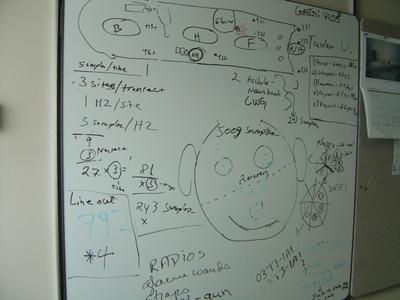
1. “Scientists at Work.” What may look like chicken scratch actually contains all sorts of important information; such as a review of sampling techniques, and last minute “to do” lists.
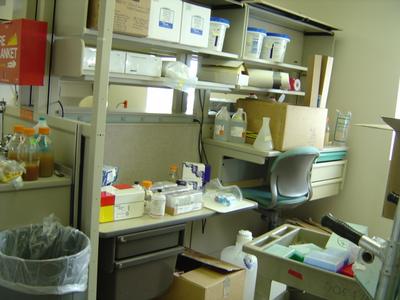
2. This is one of our work areas in the Crary Lab. We still have a lot of setting up to do.
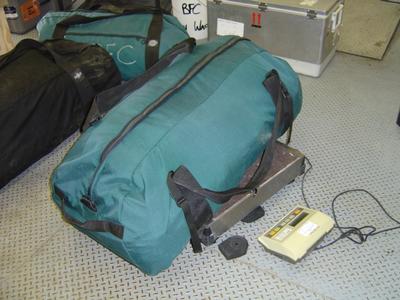
3. Taking the weight of one of our sleep kits. Each item is then given a tag containing its weight, priority status, our project’s NSF event number, and the location of our field site. The item’s weight and priority is then entered into a spreadsheet. Why is it important to keep such records?

4. The food room. Full of all sorts of yummy food for field site campers.
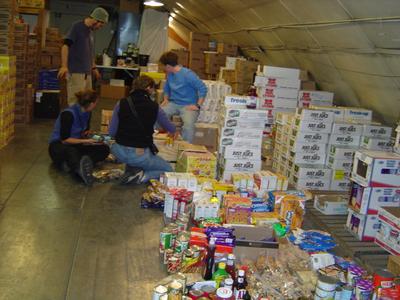
5. A team heading up to Mt. Erebus checking out their items. Our team did this same process when I was at happy camper school. Once checked out, the items are packed. What do you think is done with the boxes before placing them in the helicopter crates?
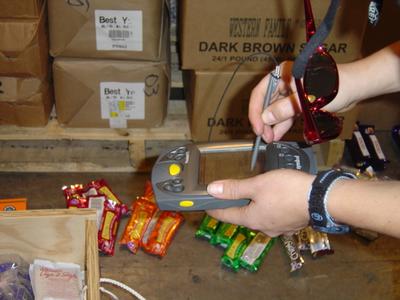
6. Each item is hand entered or scanned with a barcode reader before packing. What might be some of the advantages of using this barcode system?
Contact the TEA in the field at
.
If you cannot connect through your browser, copy the
TEA's e-mail address in the "To:" line of
your favorite e-mail package.
|
